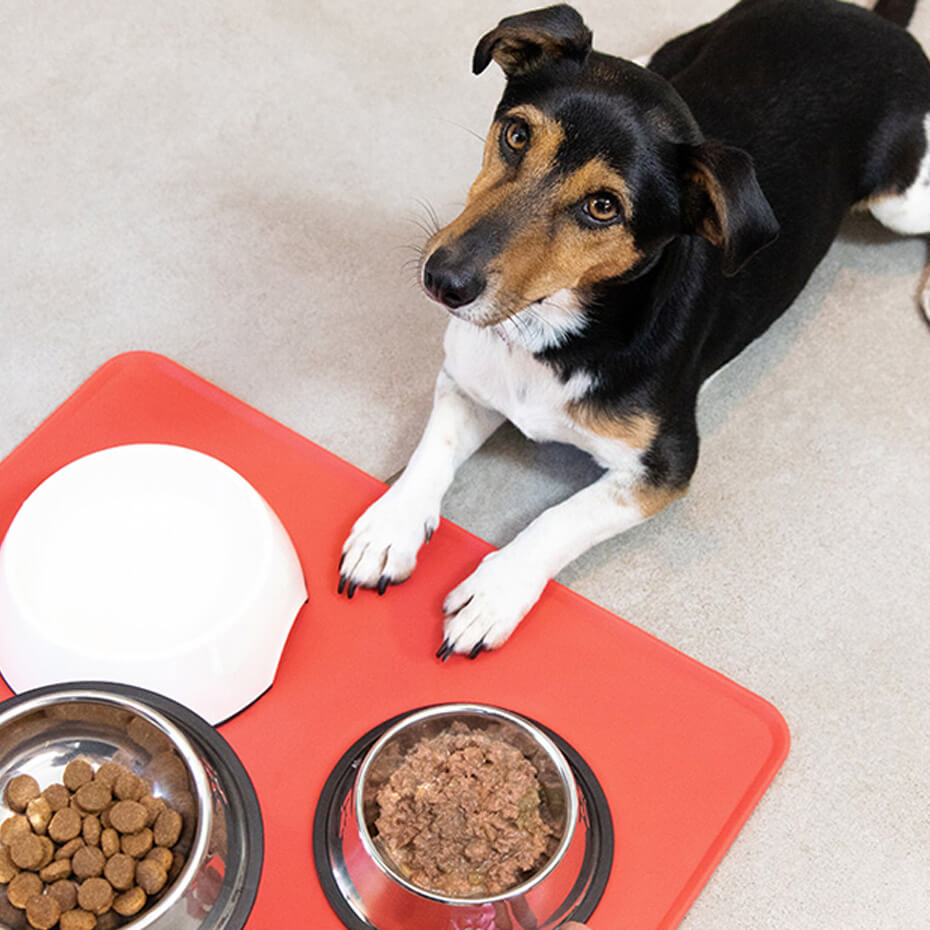
It’s not uncommon for a dog to have ticks. These pesky parasites are very adept at attaching themselves to your dog’s coat, even if you do your best to avoid them. Luckily there are simple ways to help prevent, and treat, ticks on dogs.
What are dog ticks?
Ticks are eight-legged parasites that bite your dog to drink their blood. Although dog ticks are very tiny, they can swell up to the size of a pea once they’ve attached themselves to your dog by burying their mouthparts into their skin.
How do I spot ticks on my dog?
Dog ticks are just large enough to be visible, especially if they’ve already had a bite – then they can look like small warts, and on closer inspection you can see their legs, too. You’ll usually find them around your dog’s head and neck area - just part your dog’s fur and run your fingers along their skin. Tick bites on dogs can also cause irritation and redness.
How do I remove dog ticks?
Never pull a tick out of your dog’s skin as you may end up leaving the mouthpart behind, which could cause an infection or inflammation. Instead, ask your vet to give you a specially designed tick removal tool that will get rid of the mouthparts as well, and ask them to show you how to remove dog ticks if you’re unsure.
Once you’ve removed the tick, check that its head and legs are intact and there’s nothing left behind in your dog’s skin. If you think there might be, talk to your vet who will be able to advise you and put your mind at ease.
Some flea products also kill ticks, while others provide a bit of extra protection against them, although they’ll need more frequent application than usual. Always talk to your vet to find the best treatment for your dog. Brushing your dog can also help remove them in some cases.
For more information, check out our easy step by step guide for how to remove a tick from a dog.
How do I prevent dog ticks?
You might live in an area where ticks are more common – ask your vet if this is the case. If you do live in an area with more ticks, the best way to help prevent them is with veterinary-approved treatments.
Spot-on treatments, collars, and sometimes even tablets can all help either repel dog ticks, or kill them if they attach themselves to your dog. There are lots of options available, so ask your vet which is most suitable. These preventatives will either be available through your vet or, in some cases, at a pet shop.
Make checking for dog ticks part of a routine. When you groom your dog keep an eye out for signs of ticks so you can catch them early.
Are dog ticks dangerous?
Your dog won’t usually come to any harm when they have ticks. However, while they’re not dangerous in themselves, ticks can sometimes pass on diseases from other animals.
If your dog has been bitten by a tick and you’re worried about their, health visit the vet for more advice.
Can humans be bitten by dog ticks?
Many kinds of tick don’t mind what animal they attach themselves to – including you! When you are removing ticks from your dog, try to make sure you don’t get any yourself.
Humans can be bitten by dog ticks too. Bites can cause irritation or, in some cases, pass on illnesses. If you are bitten by a tick, safely remove it without leaving the mouthpart behind. To be on the safe side, if you have been bitten don’t hesitate to see your GP, even if you feel well.
Ticks are certainly something that you don’t want your dog to have, but if you do notice them, the process is simple – remove them safely, and see your vet for advice.
Want to find out more about treating ticks, fleas and other parasites on dogs, check out our easy-to-follow guides.












